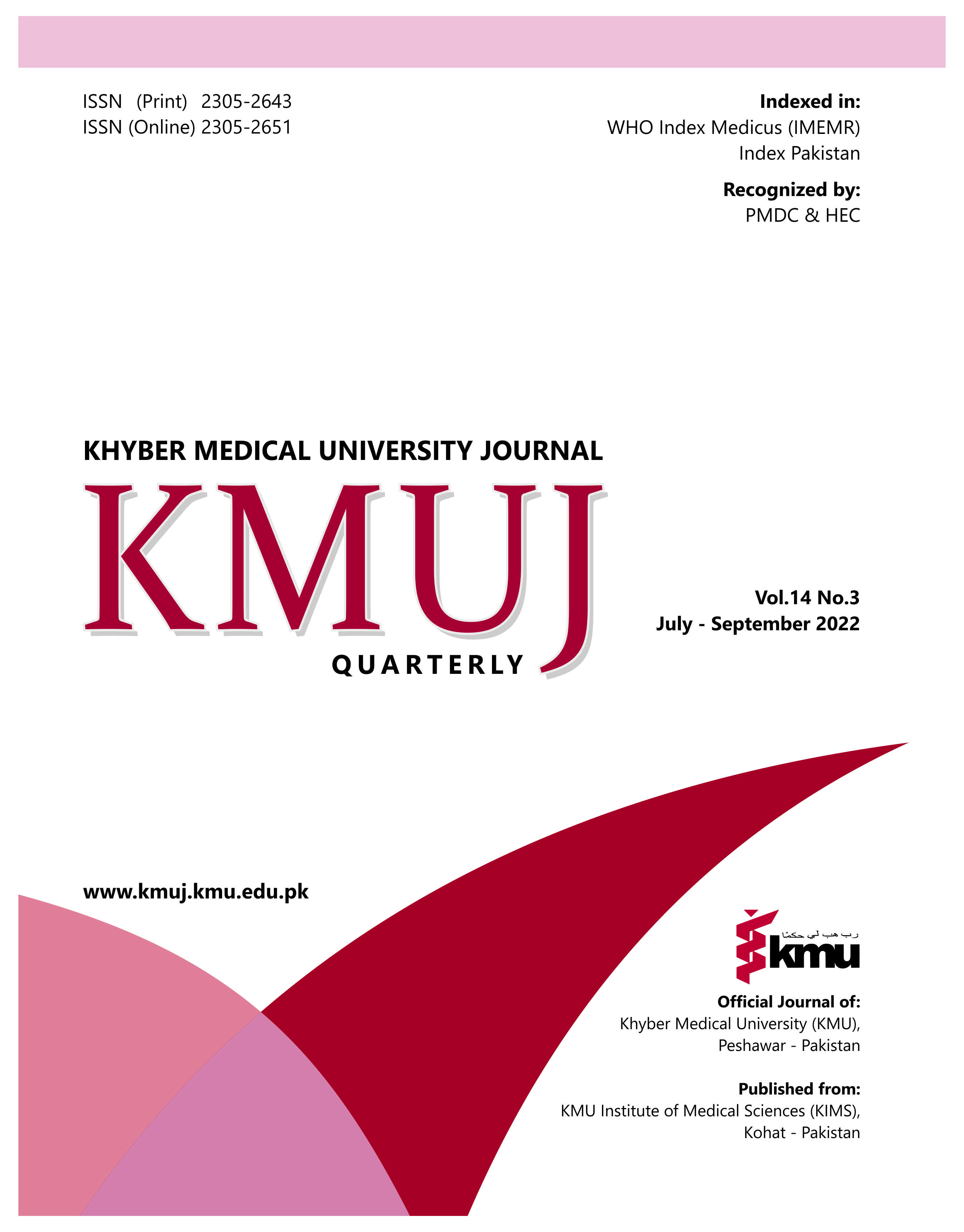THE HIDDEN VALUE OF CLINICAL PHYSIOLOGY TESTS UTILITY IN MEDICAL PRACTICE FOR A BETTER UNDERSTANDING: A MESSAGE FOR THE DECISION MAKERS
Main Article Content
Abstract
Clinical physiology department in well-organized university hospitals has three important roles: 1) it can be considered the best link between the basic sciences that have been taught in the undergraduate curriculum and clinical practice. 2) several techniques are practiced in the clinical physiology department operating in close collaboration with other clinical specialties which are very helpful in providing health care such as Pulmonary Function Test, Electroencephalogram, Nerve Conduction Studies, Auditory Brainstem Response, Electrocardiogram, Exercise-based “stress tests,” etc. 3) it has a strong relation with research disciplines and its participation in this field cannot be neglected. The aim of this viewpoint is to unravel the hidden importance of the clinical physiology department and its utility in both basic sciences and clinical teachings, both for health care and research.
Therefore, assuring clinical physiology as an independent part of the basic sciences physiology department with the decision-maker support could guarantee the survival and continuation of the link between undergraduate teaching and clinical practice. The practical sessions of the undergraduate curriculum should be updated so that students get knowledge of techniques utilized in their clinical careers. This is beyond the conventional theory bases irrelevant teaching curriculum. Recruitment of well-qualified and specialized specialists in clinical physiology techniques, technicians, and nurses who can perform and interpret these tests effectively as well as supplying the unit with modern and sophisticated equipment is of great value. Research funds have to be directed toward clinical physiology that can boost the development of medical evolution ahead.
Article Details
Work published in KMUJ is licensed under a
Creative Commons Attribution 4.0 License
Authors are permitted and encouraged to post their work online (e.g., in institutional repositories or on their website) prior to and during the submission process, as it can lead to productive exchanges, as well as earlier and greater citation of published work.
(e.g., in institutional repositories or on their website) prior to and during the submission process, as it can lead to productive exchanges, as well as earlier and greater citation of published work.
References
Institute of Medicine (US) Committee on the Health Professions Education Summit, Greiner AC, Knebel E, editors. Health Professions Education: A Bridge to Quality. Washington (DC): National Academies Press (US); 2003. https://doi.org/10.17226/10681
Li AS, Berger KI, Schwartz DR, Slater WR, Goldfarb DS. Facilitating the transition from physiology to hospital wards through an interdisciplinary case study of septic shock. BMC Med Educ 2014;12:14:78. https://doi.org/10.1186/1472-6920-14-78
Seals DR. Translational physiology: from molecules to public health. J Physiol 2013;591(14):3457-69. https://doi.org/10.1113/jphysiol.2013.253195
Arheden H. Clinical physiology: a successful academic and clinical discipline is threatened in Sweden. Adv Physiol Educ 2009;33(4):265-7. https://doi.org/10.1152/advan.00072.2009
Wanger JS, Culver BH. Quality standards in pulmonary function testing: past, present, future. Ann Am Thorac Soc 2016;13(9):1435-6. https://doi.org/10.1513/annalsats.201604-300ed
Ranu H, Wilde M, Madden B. Pulmonary Function Tests. Ulster Med J 2011;80(2):84-90.
Fei L, Zhi-wen H, Xiao-fei W, Hui-wen X, Hua Y, Yan-bin C, et al. Safety and use of pulmonary function tests: a retrospective study from a single center over seven years’ clinical practice. BMC Pulm Med 2019;19:259. https://doi.org/10.1186/s12890-019-1019-z
Husain A, Syed Shahid S. Pattern identification of obstructive and restrictive ventilatory impairment through flow volume curves. Pak J Physiol 2008;4(1):30-4.
Swanney MP, O'Dea CA, Ingram ER, Rodwell LT, Borg BM. ANZSRS Spirometry training course working group. Spirometry training courses: content, delivery and assessment - a position statement from the Australian and New Zealand society of respiratory science. Respirology 2017;22(7):1430-5. https://doi.org/10.1111/resp.13133
Lopes da Silva FH. "The Impact of EEG/MEG Signal Processing and Modeling in the Diagnostic and Management of Epilepsy,". IEEE Rev Biomed Eng 2008;1:143-56. https://doi.org/10.1109/rbme.2008.2008246
Seneviratne U, Hepworth G, Cook M, D'Souza W. Can EEG Differentiate Among Syndromes in Genetic Generalized Epilepsy? J Clin Neurophysiol 2017;34(3):213-21. https://doi.org/10.1097/wnp.0000000000000358
Fisch BJ, Spehlmann R. Fisch and Spehlmann's EEG primer: Basic principles of digital and analog EEG. 1999 Amsterdam: Elsevier
Amin U, Benbadis SR. The Role of EEG in the Erroneous Diagnosis of Epilepsy. J Clin Neurophysiol 2019;36(4):294-7. https://doi.org/10.1097/wnp.0000000000000572
Wilson W, Mills P, Bradley A, Petoe M, Smith A, Dzulkarnain A. Fast assessment of canine hearing using high click-rate BAER. Vet J 2011;187(1):136-8. https://doi.org/10.1016/j.tvjl.2009.10.009
Lilian C, Luis O, González G, Randy K, Tatiana F, Gabriela P, et al. Exposures to fine particulate matter (PM2.5) and ozone above USA standards are associated with auditory brainstem dysmorphology and abnormal auditory brainstem evoked potentials in healthy young dogs. Environ Res 2017;158:324-32. https://doi.org/10.1016/j.envres.2017.06.026
Habib SH, Habib SS. Auditory brainstem response: An overview of neurophysiological implications and clinical applications -A Narrative Review. J Pak Med Assoc 2021;71(9):2230-36. https://doi.org/10.47391/jpma.03-432
Odom JV, Bach M, Brigell M, Holder GE, McCulloch DL, Mizota A, et al. International Society for Clinical Electrophysiology of Vision. ISCEV standard for clinical visual evoked potentials: (2016 update). Doc Ophthalmol 2016;133(1):1-9. https://doi.org/10.1007/s10633-016-9553-y
Bradley and Daroff's Neurology in Clinical Practice,2022, 2-Volume Set, 8th Edition
Baker A, Widrich J. Somatosensory Evoked Potentials. StatPearls [Internet]. January 2022. [Accessed on: August 14, 2021]. Available from URL: https://www.ncbi.nlm.nih.gov/books/NBK544358/
Yamada T. Somatosensory Evoked Potentials. Encyclopedia of the Neurological Sciences (Second Edition), 2014, pp:230-38. https://doi.org/10.1016/B978-0-12-385157-4.00544-3
O’Donnell DE, Neder JA. Why Clinical Physiology Remains Vital in the Modern Era. Clin Chest Med 2019;40(2):13-4. https://doi.org/10.1016/j.ccm.2019.03.001
Tran D. Cardiopulmonary Exercise Testing. Methods Mol Biol 2018;1735:285-95. https://doi.org/10.1007/978-1-4939-7614-0_18
Alalyan MJ, Alkahtani SA, Habib SS, Flatt AA. Suitability of Ultra-Short-Term Heart Rate Variability in Military Trainees. Healthcare (Basel) 2020;8(4):409. https://doi.org/10.3390/healthcare8040409
Campos M. Heart rate variability: How it might indicate well-being. Harvard health Publishing. 2021; Accessed on: December 22, 2021, Available from URL: https://www.health.harvard.edu/blog/heart-rate-variability-new-way-track-well-2017112212789
Yasuma F, Hayano J. Respiratory sinus arrhythmia: why does the heartbeat synchronize with respiratory rhythm? Chest 2004;125(2):683-90. https://doi.org/10.1378/chest.125.2.683
Gilani A, Juraschek SP, Belanger MJ, Vowles JE, Wannamethee SG. Postural hypotension. BMJ 2020;373:n922. https://doi.org/10.1136/bmj.n922
Lanier JB, Mote MB, Clay EC. Evaluation and management of orthostatic hypotension. Am Fam Physician 2011;84(5):527-36.
Michael Joyner. "Why Physiology Matters in Medicine". Physiology (Bethesda) 2011;26(2):72-5. https://doi.org/10.1152/physiol.00003.2011
